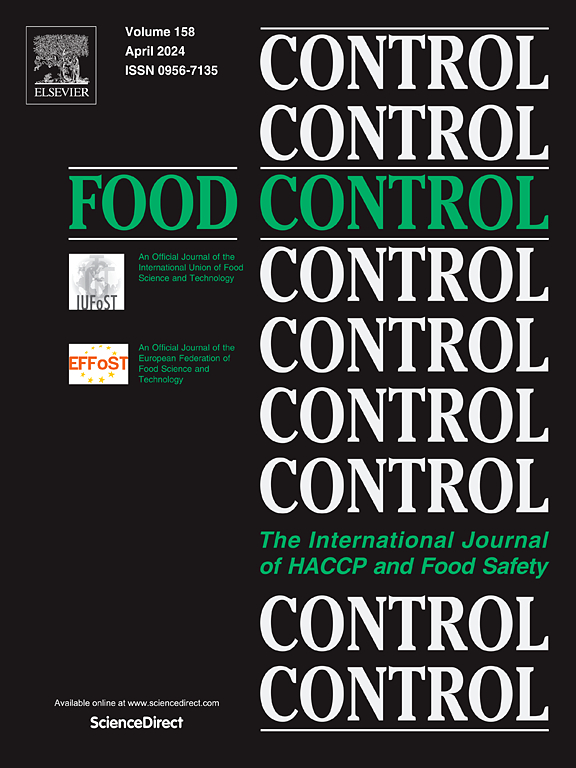Concentration of 210Po in vegan diet foods commercialized in Italy and dose calculation
IF 5.6
1区 农林科学
Q1 FOOD SCIENCE & TECHNOLOGY
引用次数: 0
Abstract
Ingestion of food and drink is one of the main routes by which radioactive elements in the environment enter the human body, which is why it is essential to know the concentration of the most significant naturally occurring and anthropogenic radionuclides in the diet.
The radionuclide that is the subject of this work is 210Po, a radionuclide whose radiotoxicity is comparable to that of 239Pu and is about five times greater than that of 226Ra.
To date, natural and artificial radioactivity has been measured in various foodstuffs in Italy. However, there needs to be more sufficient data concerning the vegan diet. This particular diet excludes all foods of animal origin, which is becoming increasingly popular. According to Eurispes' Italy 2021 Report, it has been estimated that 2,4 % of the Italian population follows a vegan diet.
The first objective of this work was to complete previous alpha spectrometry measurement campaigns of 210Po carried out by the same research group on typical foods of the vegan diet (legumes, cereals, and their derivatives, pseudocereals, algae, and spices) to contribute to more comprehensive databases.
The second objective was calculating the committed effective dose resulting from one year of food consumption, using the concentration data obtained in the analyzed samples.
The concentration values obtained ranged from a minimum of 0,069 ± 0,051 Bq kg−1 in cereal and legume products to a maximum of 3,89 ± 2,79 Bq kg−1 in algae. The committed effective dose for the average adult related to the consumption of these foods was 67,7 μSv y−1.

求助全文
约1分钟内获得全文
求助全文
来源期刊

Food Control
工程技术-食品科技
CiteScore
12.20
自引率
6.70%
发文量
758
审稿时长
33 days
期刊介绍:
Food Control is an international journal that provides essential information for those involved in food safety and process control.
Food Control covers the below areas that relate to food process control or to food safety of human foods:
• Microbial food safety and antimicrobial systems
• Mycotoxins
• Hazard analysis, HACCP and food safety objectives
• Risk assessment, including microbial and chemical hazards
• Quality assurance
• Good manufacturing practices
• Food process systems design and control
• Food Packaging technology and materials in contact with foods
• Rapid methods of analysis and detection, including sensor technology
• Codes of practice, legislation and international harmonization
• Consumer issues
• Education, training and research needs.
The scope of Food Control is comprehensive and includes original research papers, authoritative reviews, short communications, comment articles that report on new developments in food control, and position papers.
 求助内容:
求助内容: 应助结果提醒方式:
应助结果提醒方式:


